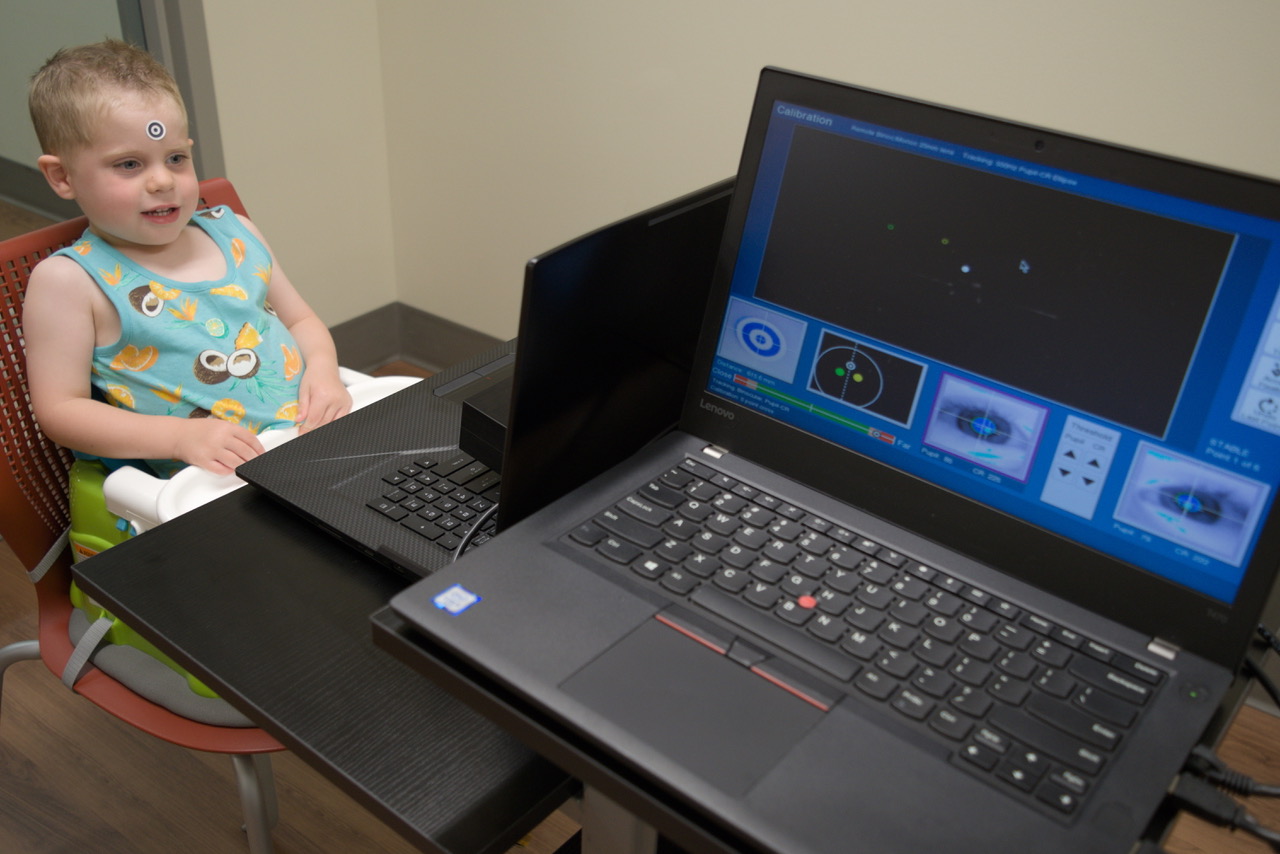RCAC partners with faculty member on autism diagnostic tool
A new collaboration between the Rosen Center and Advanced Computing (RCAC) and a Purdue faculty member aims to make it easier to detect autism earlier and more accurately.
Brandon Keehn, associate professor of speech, language and hearing sciences and psychological sciences, and the director of Purdue’s Autism Research Center, has partnered with RCAC to develop a tool that can input the eye-tracking data acquired during an autism evaluation, analyze the data, combine it with clinical observations from a doctor or other professional and generate a report to guide a clinician in diagnosing autism.
“I’m incredibly grateful to RCAC for their invaluable assistance with the refinement of our autism diagnostic tool,” says Keehn, who heads the Attention and Neurodevelopmental Disorders Lab.
“Their team provided exceptional support in programming, integrating advanced technologies, and optimizing our tool’s functionality. Throughout the entire process, they demonstrated not only their deep technical expertise, but also a genuine commitment to improving lives. The collaboration has made a significant difference for our project.”
Eye-tracking is a tool for measuring how individuals deploy their attention – what captures their gaze, what they find most engaging. Keehn’s lab has developed videos that elicit patterns of gaze that are sensitive to autism and can aid in diagnosis. Usually this eye-tracking data would be analyzed in batches on a powerful computer, necessitating a delay between collection of the data and a diagnosis of autism. But the tool developed by Keehn and RCAC analyzes what is essentially a large, complex dataset and produces a report in seconds or minutes, allowing a clinical provider to make a diagnostic decision in real time.

Rob Campbell, lead software engineer, led the development on RCAC’s end, and built a platform that intuitively integrated the eye-tracking biometric data with the clinical data entered by the user.
“Rob was very helpful in creating a streamlined package that is very user-friendly so that even a novice can quickly generate a report that a clinician can use in determining their diagnosis,” says Keehn.
Eventually Keehn hopes to expand the project with an integrated, scalable hardware solution such as a tablet, so the tool could be entirely self-contained.
To learn more about RCAC’s computational and software development resources, contact rcac-help@purdue.edu.
